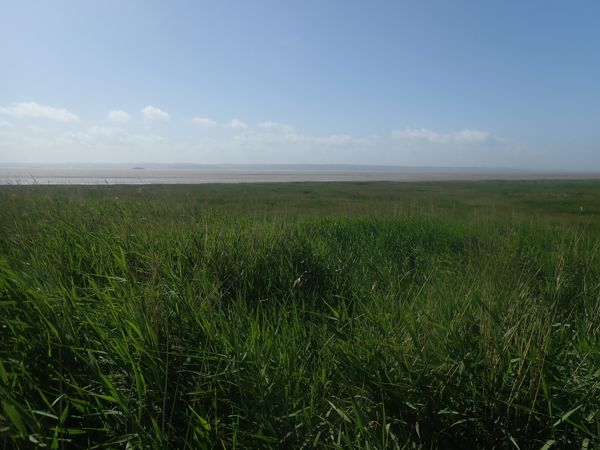Fresh approach to saltmarsh habitat restoration from Natural Resources Wales

Work to restore the saltmarsh across the Rhymney Great Wharf is getting underway, with the ambition of increasing biodiversity and resilience within the Severn Estuary Special Area of Conservation (SAC) and reducing flood risk.
Officers from Natural Resources Wales (NRW) will renew and extend sedimentation polders in the area as part of the restoration plans. The refined polder design encourages the establishment of saltmarsh habitat by creating fencing made of chestnut posts and brushwood bundles. These structures, extending over 2km along the foreshore, slow the movement of the tide as it recedes, allowing sediment to be deposited within the polder fields.
Over time, mud and sand builds up and turns into saltmarsh. This will help restore the important saltmarsh habitat of the Severn Estuary, supporting local wildlife and helping to trap carbon. This nature based solution could also help to enhance the existing flood defences and reduce future flood risk by reducing pressure from erosion.
Lily Pauls, Team leader for marine projects at NRW said:
“Helping to improve the conditions across Rhymney Great Wharf will support the mudflat and saltmarsh to replenish themselves and create better conditions for the wildlife that lives in and around them. These habitats are so valuable for so many reasons. Ecologically, they support everything from specialist plants to birds and fish, so they play a vital role in nature conservation and are such an important part of the coastline along the estuary.
“Healthy saltmarshes can also provide flood protection, trap carbon to help against climate change, so they can make an important and positive contribution to safeguarding against the climate emergency.”
This project is funded through the Welsh Government’s Nature Networks programme and contributes towards the ambition of establishing targeted schemes to support restoration of saltmarsh habitats along Wales’ coastline.
